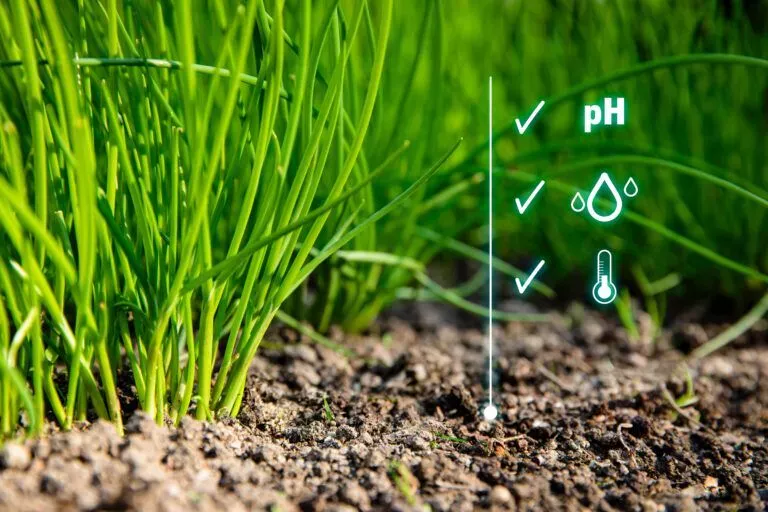
WHERE ARE BROWN SOILS FOUND IN POLAND?
Brown soils are found in large quantities in Poland, accounting for about 52% of all soils in the country. Only 20% of them are true brown soils, while the remaining 80% are decidedly acidic. They can be found mainly in deciduous and mixed forests in Poland. Areas where true brown soils are found include:
- Lublin Upland
- Kraków-Częstochowa Upland
- Silesian Lowland
Brown soils with acidic pH can be found in:
- mountainous areas
- foothill areas
- in the lowland belt between Wrocław and Kalisz
- Szczecin Lowland
WHAT ARE THE CHARACTERISTICS OF BROWN SOILS?
These soils can be divided into true brown soils and acidic brown soils. They are classified as brown earth soils. Their formation is related to the process of the message of loess, massive rocks, and also dust. They are found in temperate climates with high rainfall. This provides excellent conditions for mineral residues to mineralize. The parent rock on which brown soils are found is mainly clayey loams rich in calcium. Brown soils are considered good for agricultural use.
What is the process of the message?
The process of the message is most commonly observed in rocks containing calcite (CaCO3), as well as those rich in calcium and magnesium. During the massage process, calcium and its compounds act as neutralizers for mineral and organic acids in the soil. As a result, the soil gains a neutral or slightly acidic pH. Iron compounds are released during the massage process, which gives the soil a brown color.
ON WHAT SUBSTRATES DO BROWN SOILS FORM, AND WHAT DOES THEIR PROFILE LOOK LIKE?
The fertility of soils in Poland is influenced by many factors, one of which is the type of rock on which they form. Therefore, depending on the type and location of formation, the profile of a given brown soil may vary.
True Brown Soils
In the case of true brown soils formed on rocks rich in basic compounds, the profile looks as follows:
for forest soils: O horizon (forest litter), A horizon (accumulative humus), Bbr (weathered layer), Cca (parent rock)
for arable soils: Ap, Bbr, Cca
The forest litter horizon for true brown soils contains fallen leaves and plant residues. The color of the accumulative humus layer is gray or brownish-gray. This layer can reach a thickness of up to 30 cm in arable soils. Its structure is granular. It gradually transitions into the weathered layer, which has a nutty structure and low carbonate content. Next is the parent rock, which has a light brown color. The acidity of this soil ranges from 5.0 to 7.2. It contains a lot of calcium cations. It has about 2–3% of humus, and the carbon-to-calcium ratio is less than 15.
Typical Brown Soils
Typical brown soils form on various parent rocks. If they are clayey sands or gravels, they often form complexes together with brown-leached soils. They can be classified as part of the wheat-rye or good rye complexes.
Typical brown soils formed on glacial till have good chemical properties. Their humus accumulation level is as high as 3%. They also have high saturation with basic cations, exceeding 60%. The pH of these soils is neutral or slightly acidic.
Medium and light brown soils form on medium and light substrates, characterized by good water-air properties. They also have appropriate physical and chemical properties. They are most commonly classified as part of the very good or good wheat complexes.
Brown soils with unfavorable water-air properties form on heavy glacial clays and loams. They are rich in nutrients but are poorly aerated and permeable. They are classified as part of the defective wheat or strong cereal-pasture complexes.
Brown soils formed on loess have favorable water-air properties. They most often belong to very good, good, or defective wheat complexes.
Gray-brown Soils
Gray-brown soils are transitional soils between black soils and brown soils. They are characterized by high moisture content. They accumulate large amounts of organic matter. They belong to defective wheat or very good rye complexes. These soils have over 60% saturation with basic cations. Their pH is neutral or slightly acidic. Gray-brown soils are well aerated.
Leached Brown Soils
Leached brown soils form on glacial till. They have a more acidic pH than typical brown soils. They are most commonly used as meadows or pastures. Leached soils formed on loess have poor leaching. Those formed on sands and gravels are too permeable, so they may be too dry for plants and have poor agricultural suitability.
Acid Brown Soils
Acid brown soils can be divided into:
- typical acid brown soils, formed from granites and coarse-grained sandstones, with acidic or very acidic pH
- bleached brown soils, mainly found in mountains, with low pH
- gleyed acid brown soils, with unfavorable water-air conditions, poorly permeable, requiring systematic liming.

WHAT CAN BE GROWN ON BROWN SOILS?
True brown soils are first-class soils and can yield high yields. In this case, the following crops are best suited:
- sugar beets
- wheat
- alfalfa
- rapeseed
Acidic subtypes of brown soils can have class II–V depending on their acidity, water-air conditions, and mineral composition. Reclamation of brown soil classified as the lower class may also be necessary.
WHAT ARE THE SUBTYPES OF BROWN SOILS?
Brown soils can also be divided into subtypes:
- eutrophic – formed from sedimentary rocks, carbonate saturation reaches 60% even up to 100 cm deep in the soil profile
- dystrophic – formed from acidic rocks, do not contain carbonates up to 100 cm deep in the soil profile
- mucks – soils formed as a result of accumulation and accumulation of material carried by water
- rendzinas – formed on limestone rocks, are shallow, interzonal soils






